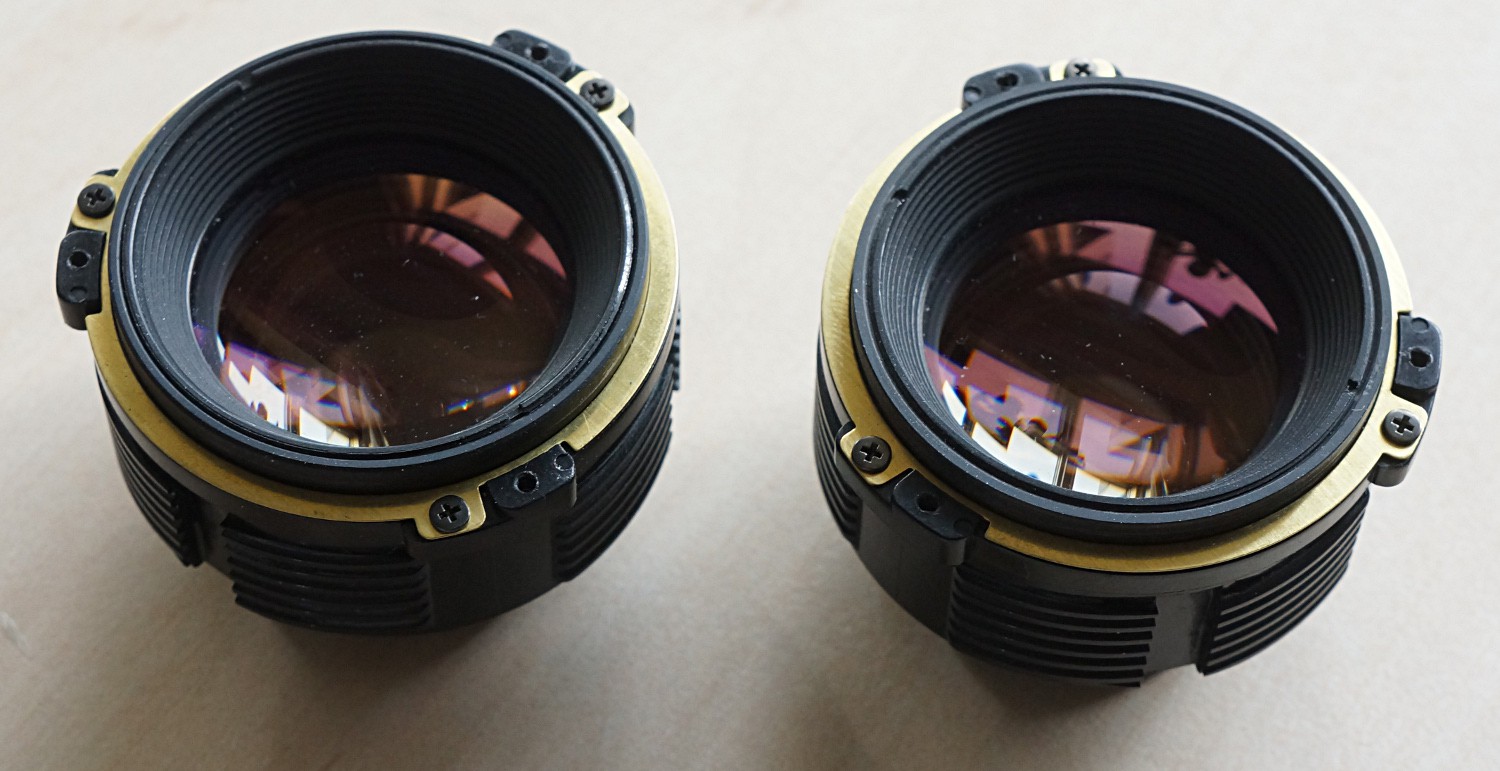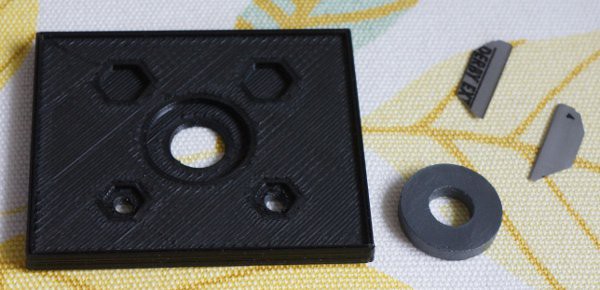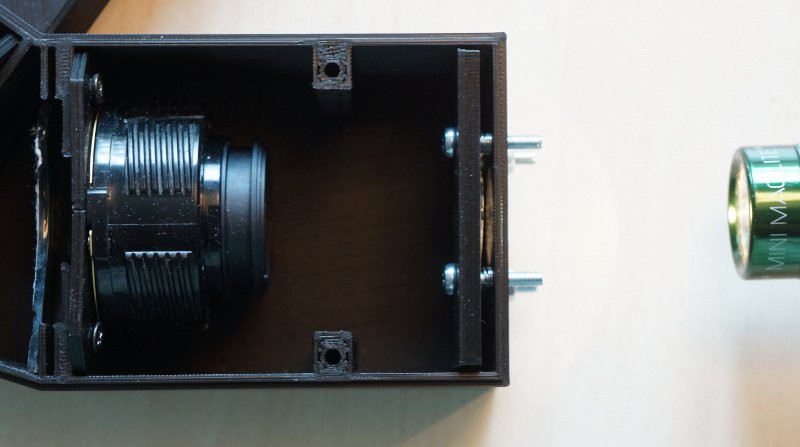-
1Step 1
Print the spectrograph
- Download the spectrograph scad files.
- If you're using a different grating modify the angle "1st" in both files. If you use different lenses modify the parameter "ff" in both files.
- Make sure the screw-holes match the TCD1304 PCB you have (there are two SMD versions of the PCB).
- Print the spectrograph and the lid.
NB: It takes around 18h to print the spectrograph, so go get drunk or something in the meantime.
-
2Step 2
The linear CCD module
- Goto https://hackaday.io/project/9829-linear-ccd-module
- Populate the TCD1304 PCB. However you may want to put T1 on the same side as the CCD and solder the cable directly onto the PCB. There's not a lot of space inside the OtterVis LGL box.
- Insert the PCB in the spectrograph. NB: Hex-screws will be much easier to deal with than philips head screws.
-
3Step 3
![]()
Stripping the lenses:
While the Pentax SMC-A 50mm f/2 are small, they need to be stripped from all their extra weight.
- Unscrew and remove the bayonett.
- Unscrew and remove the aperture coupling together with any screws you find.
- Unscrew front ring.
- Again remove any screws you come by.
- Remove the front lens group.
- Remove the aperture iris.
- Remove the lens barrel from the focusing helicoid.
- Reassemble the front and back lens groups, and you should have something like the picture above.
You can also watch this video (not mine) on youtube: Pentax SMC-A 50/2 disassembly. Be advised that for this project you won't need any spanner wrenches, so if you find yourself in need of that, you're going too far..
Download and print the lens holders. Insert the lenses in the lens holders and secure them using the left-over screws. Finally insert the lenses in the spectrograph.
-
4Step 4
Assemble the slit:
Find a small ring magnet from somewhere. Try and find one that's not taller than 3mm. Download the scad-file for the slit holder and modify the insert, so the magnet fits.
Insert the magnet. Cut a razor blade - scissors are fine for this - and fit them over the magnet.
- Insert two 10mm M3 screws in the two lower screw-holes of the spectrograph (the holes will be inaccessible later).
- Mount the slit-holder with two 16mm M3 screws and two pieces of ballpoint-pen-spring.
- Place a small mirror after the focusing lens and a flashlight in front of the slit:
Use the reflection of the slit onto itself to focus.
OtterVIS LGL spectrophotometer
A super cheap decently resolving open source VIS-spectrophotometer. The cheapest in the OtterVIS line.
 esben rossel
esben rossel

 Use the reflection of the slit onto itself to focus.
Use the reflection of the slit onto itself to focus.
Discussions
Become a Hackaday.io Member
Create an account to leave a comment. Already have an account? Log In.
I took apart a simple spectrometer from vernier.com that we use in our labs to see how it was put together. they just used simple plastic lenses. they look like miniature Fresnel lenses. And they just slip into slots along with the grating. Seems to give pretty good resolution. I think this will be a fun project to for our computer and our chemistry students! fun project.
Are you sure? yes | no
interesting. we have those at work too, I always suspected they were as cheap on the inside as they look on the outside, but I never tried to disassemble one. that said, they do a fair job between A=0.2 and A=1.1
Are you sure? yes | no
I guess I mean is there a reason it needed to be a double Gauss lens? Why not some achromatic doublet? etc.
Are you sure? yes | no
You can do that for the collimating lens. I'm not sure an achromat is the better option for the imaging lens. I'm by no means an expert on optics, but if I remember correctly they're not particularly well corrected for spherical abberations.
On top of that achromats are expensive (at least the ones I could find are 10x the price of a standard 50mm double gauss camera lens), and the whole point in this project is to keep the price down.
On a side note, I use an achromat for collimating the light from an optical fiber in the Raman spectrometer I'm also constructing. The achromat fits inside an SM1 lens tube from Thorlabs and this makes for an easy-to-focus setup.
Are you sure? yes | no
What were the considerations in picking the lens to use?
Are you sure? yes | no
The focal length is given by the grating and the sensor size, but size, accessibilty and price vs quality were the big factors.
I considered 50mm's from all the big brands ie. Nikon, Canon, Olympus, Pentax, Minolta, Konica - and some of the bigger 3rd party manufactureres. I didn't want anything that would be too difficult to find, and ebay is littered with cheap 50mm 1.7, 1.8, 2 lenses.
I leaned mostly toward Olympus because of the Zuiko lenses small size, but in the end I chose the pentax SMC-A 50/2 because I found a seller who had a small lot where the aperture ring was glued stuck - so I got them for 6£ each.
Are you sure? yes | no